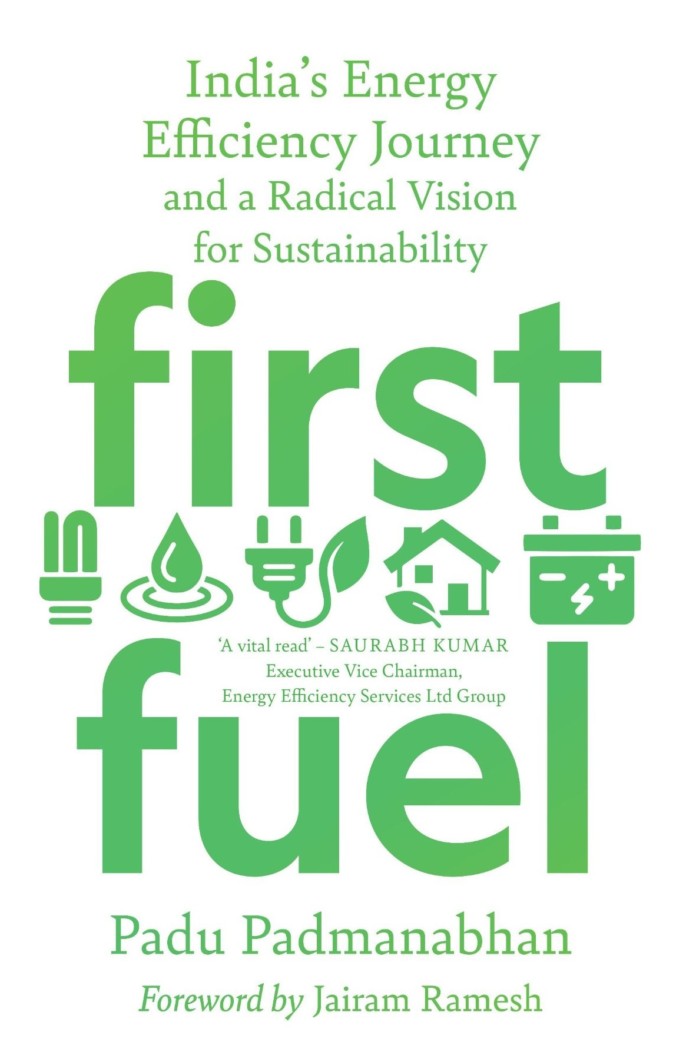We all have heard this famous one liner since our school days ‘a watt saved is a watt earned.’ Looks like this line has not motivated consumers enough. Perhaps the following equation should make energy users rush to the switch “every unit of energy saved at the point of end use translates to us having avoided generating 4 – 5 units and the cost of doing this is a piffle – one-fifth to a tenth of producing it.”
In First Fuel – India’s Energy Efficiency Journey and a Radical Vision for Sustainability author Padu Padmanabhan puts out many such mind boggling numbers and persuasive stories of how the ‘first fuel’ – referring to the energy one can save through efficiency – can significantly influence choices in consumption, production, distribution, fuel-mix, climate change.
This book is a definitive work on the energy history of India. It also doubles up as a fervent call to policy makers to focus less on mindlessly adding supply to the grid and tries to convince them why it is absolutely imperative to go hard on better management of demand. Padu writes, “While we search for other sources of energy, we would be well advised that the real breakthrough in energy is using less.” He adds, “The only solution for energy deficiency is energy efficiency.”
Even though the efficiency movement started way back in the 1970s, India has done well only in some segments like ensuring star-rating for electrical goods, fuel efficiency rating of fuels for automobiles. It needs to do a lot more. The energy guzzler – the agriculture sector – has been the laggard. Short-term politics is holding back India achieving high efficiency impact in the use of natural resources including water and the power needed to lift and distribute it. Free energy is India’s number one enemy.
This book is not as much forward facing as it is about what has gone well and not gone well. Surprisingly, this book has no jargons. It is accessible to anyone even remotely connected with the energy sector, especially business leaders, policy makers, bureaucrats and academicians.
India has made huge strides in renewable energy and is expected to do the same with hydrogen but how it manages its fuel-mix, its crumbling coal infrastructure, modernizes distribution and shapes consumer behavior in the next three to five years will determine India’s transition to an efficiency economy. The author urges professionals today to “accept the baton from an earlier generation that did the little it could” and pass it on to the next.
Leakage, waste, high distribution loss is sinfully high in India, as much as a third of its GDP. If India is serious about becoming the $ 5 trillion economy by 2025, with least cost to the environment, it has to push the Efficiency Economy agenda forward in a big way. Without it, it will struggle.
Watch discussion on the book between Hariharan Chandrashekar and Padu Padmanabhan on the book at the 7th Bangalore Business Literature Festival 21 – 23 September 2021 here.










